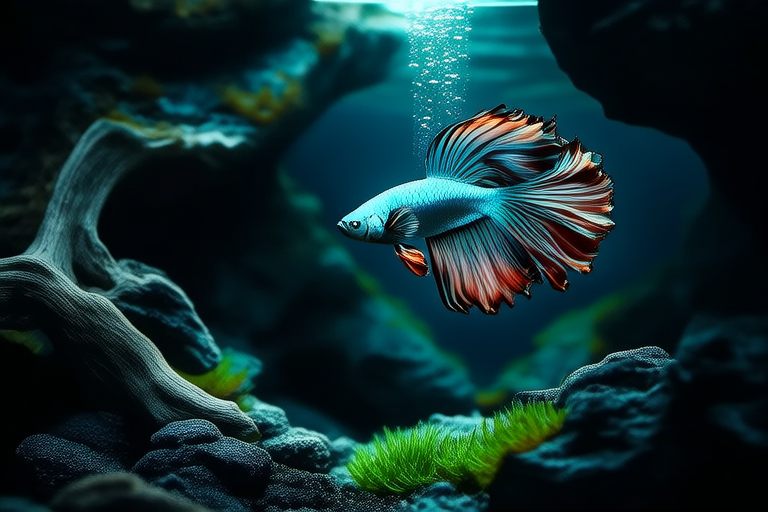Creative DIY Hiding Spots for Your Betta Fish’s Ultimate Relaxation Zone
Welcome to the fascinating world of betta fish! These vibrant, intelligent creatures bring joy and color to any aquarium setup. One crucial aspect of creating a thriving environment for your betta is ensuring they have ample hiding spots. These spaces are vital for stress reduction and the expression of natural behaviors. In this comprehensive guide, we will explore how to craft creative DIY hiding spots using materials such as PVC pipes, clay pots, and aquarium-safe plants. We’ll also discuss the importance of selecting appropriate sizes and ensuring safety.
The Importance of Hiding Spots for Betta Fish
Betta fish are territorial by nature and need places where they can retreat when feeling stressed or overwhelmed. Providing these safe havens helps reduce anxiety, promotes healthier living conditions, and encourages the display of natural behaviors. Without proper hiding spots, bettas may become more aggressive towards tank mates or exhibit signs of distress, such as darting around constantly or refusing to eat.
Materials Needed
- PVC pipes (various diameters)
- Clay pots (small to medium-sized)
- Aquarium-safe plants (real or artificial)
- Glue suitable for aquarium use (e.g., silicone sealant)
- Decorative stones or gravel
- Scissors
- Sandpaper
- Paint (optional, non-toxic)
Step-by-Step Instructions for Crafting PVC Pipe Hiding Spots
Choosing the Right Diameter
Select PVC pipes that match the size of your betta fish. A pipe diameter between 1 inch and 2 inches is ideal, allowing enough room for your betta to swim in comfortably while still providing a snug fit. This ensures your betta feels secure without feeling cramped.
Preparing the PVC Pipes
- Measure and Cut: Measure the length of the PVC pipe you want to use. Typically, a length between 4 inches and 8 inches works well. Use a saw to cut the pipe to the desired length.
- Smooth Edges: Sand down any rough edges on the cut ends of the PVC pipe to prevent injury to your betta.
- Drill Entrance Holes: Drill small entrance holes at both ends of the pipe. Ensure these openings are large enough for your betta to enter but not so big that they compromise the sense of security provided by the hiding spot.
- Paint (Optional): If desired, paint the exterior of the PVC pipe using non-toxic aquarium-safe paints to add color and visual interest to your tank.
Securing the PVC Pipe in the Aquarium
To prevent the PVC pipe from floating or shifting within the tank, secure it using aquarium-safe silicone sealant or weight it down with decorative stones or gravel.
Creating Clay Pot Hiding Spots
Selecting the Appropriate Size
Choose clay pots that are small to medium-sized, ensuring they are large enough for your betta to fit inside comfortably but not too big that they dominate the tank space. A pot with a diameter of about 3 inches to 5 inches should suffice.
Preparing the Clay Pots
- Wash Thoroughly: Clean the clay pot thoroughly with warm water and mild soap to remove any dirt or debris.
- Drill Drainage Holes: Drill several small drainage holes in the bottom of the pot to allow water to flow through easily. This prevents water from becoming stagnant and keeps the hiding spot hygienic.
- Add Gravel or Decorative Stones: Fill the bottom of the pot with a layer of gravel or decorative stones to weigh it down and keep it submerged.
Placing the Clay Pot in the Tank
Gently place the prepared clay pot into your aquarium, ensuring it remains stable and does not shift during normal tank activity.
